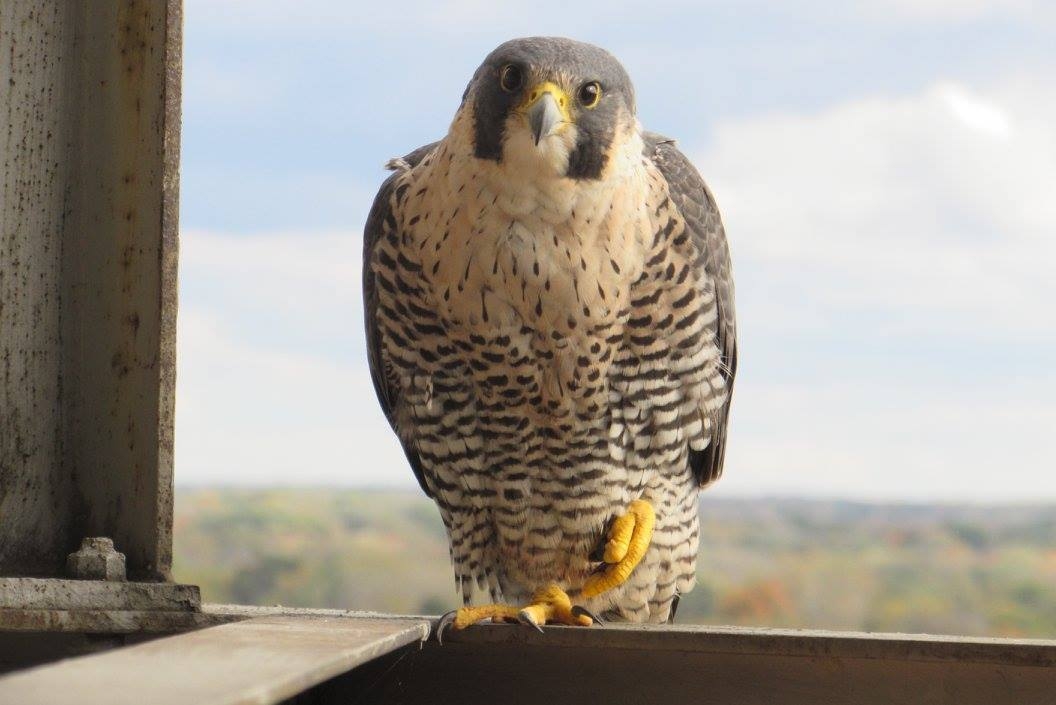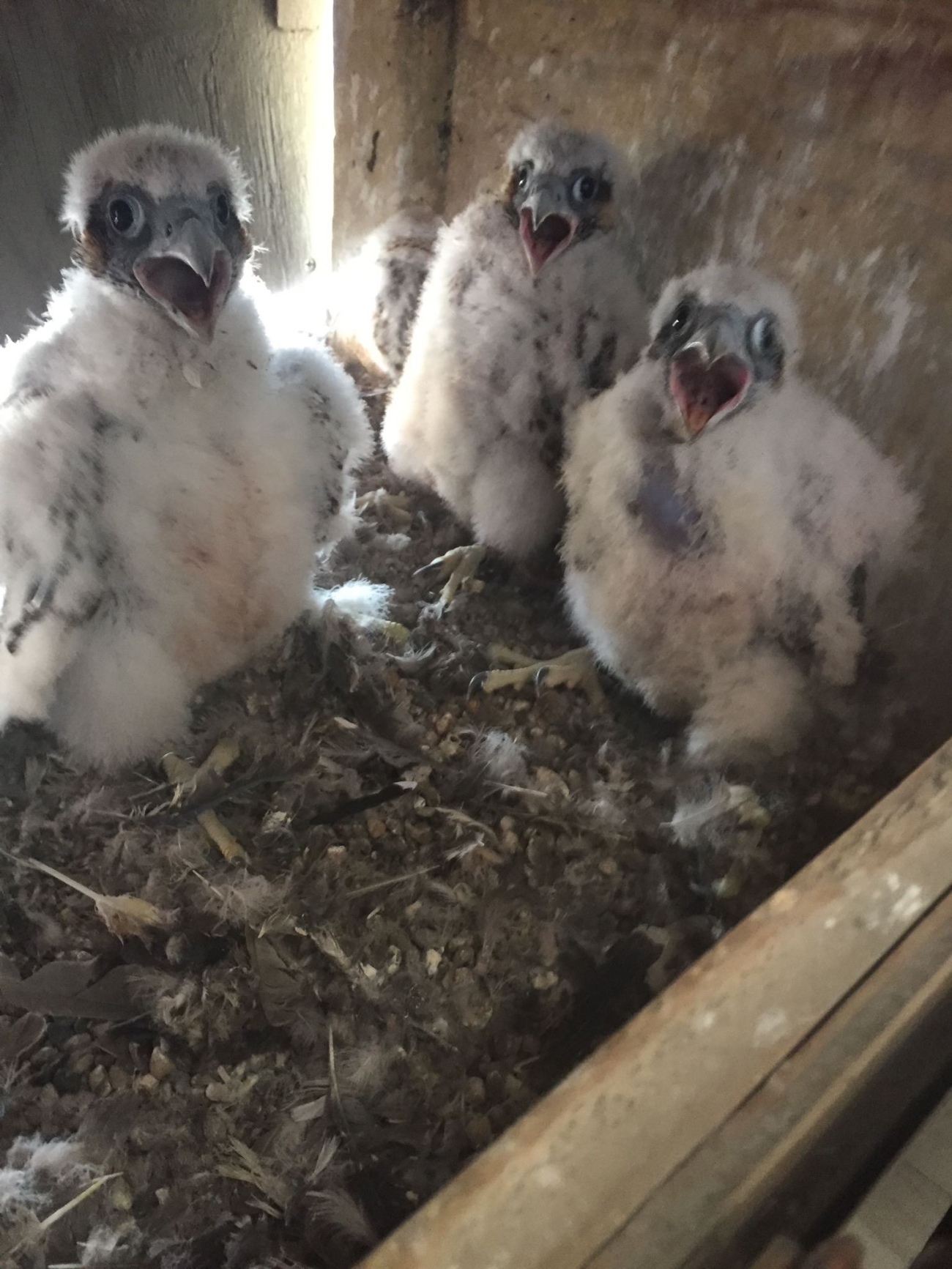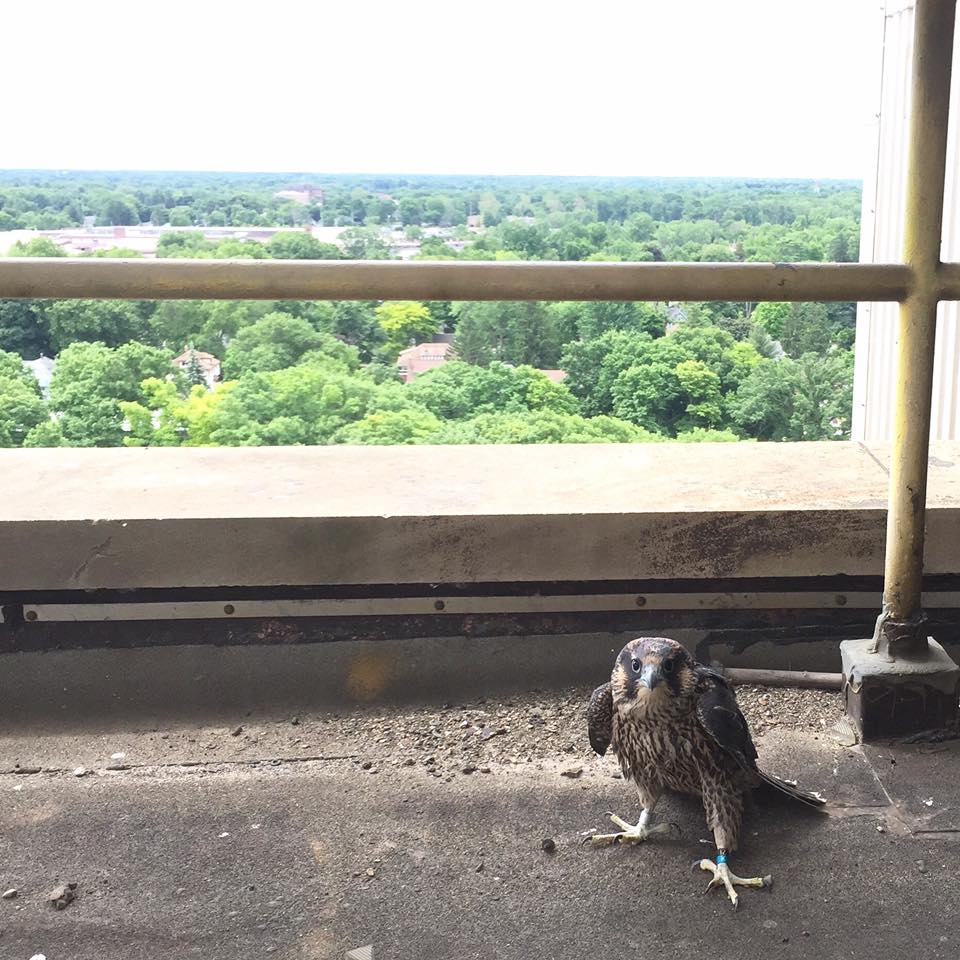The Lansing Board of Water & Light has served as a nesting site for peregrine falcons since 2004, when our team successfully fledged two falcon chicks. Peregrine falcons are an endangered species in Michigan that mate for life and use the same nesting site year after year, so we knew our first female, Stelco, would likely come back to lay more eggs. Over the years, our team worked to build a nesting box atop the iconic Eckert Power Plant, where we have since witnessed over 80 eggs laid. In 2022, we were lucky to find another pair of falcons at Erickson Power Station.
See if you can catch a glimpse of our feathered friends on the Eckert Falcon Cam!
See if you can catch a glimpse of our feathered friends on the Erickson Falcon Cam!
Pennies for Peregrine
After the nesting box was built, our team had an idea to put in a webcam so we could watch the falcons – and their chicks – in real time. In September 2007, BWL staff and students at Moores Park Elementary School kicked off “Pennies for Peregrine” to help fund the webcam. They reached their goal and in early 2008, the webcams were installed for everyone to enjoy!
Fun Facts About Peregrine Falcons
- The peregrine is the fastest bird on record reaching horizontal cruising speeds of 40-55mph (65-90 kmh) and not exceeding speeds of 65-68 mph (105-110 kmh). When stooping, the peregrine flies at much greater speeds however, varying from 99-273 mph (160-440 kmh)!
- Both the adult male and female help care for the nestlings.
- A male peregrine is referred to as a "tiercel," meaning third. The female, which is slightly larger and more powerful than the male, was preferred, and only she is given the title of "falcon."
- Courtship begins in March, and eggs are typically laid in April. Incubation typically lasts 30 to 35 days, and will start when the second egg is laid. By May, eggs have hatched and fledging typically takes place in July.
- Courtship behaviors can be seen all seasons of the year, but especially during courtship as the mated pair approach and greet each other after being apart.
- When the young falcons are three weeks old, Division of Wildlife biologists examine the birds to determine their sex and take a blood sample used to track DNA and possible chemical contaminants. Biologists also equip each bird with metal leg bands that are used to identify the falcons in the future.
- A young falcon in the nest is called a nestling, or an eyas (pronounced I-es). They are covered by white down when they hatch, which is replaced by feathers in three to five weeks.
- Prey is caught in flight. Using its great speed, the falcon delivers a powerful blow to its prey with a half-closed foot. It retrieves the dead bird either in mid-air or after it falls to the ground.
- They have very good eye sight and can spot a meal up to a mile away.
- Their range is about 30 miles with their nest in the center of their range. They do not like other falcons within three miles of their nest site.
- Peregrines use the same nest year after year, and mate for life.
Image Gallery
Check out some of our favorite images of our peregrine falcon friends from over the years!





